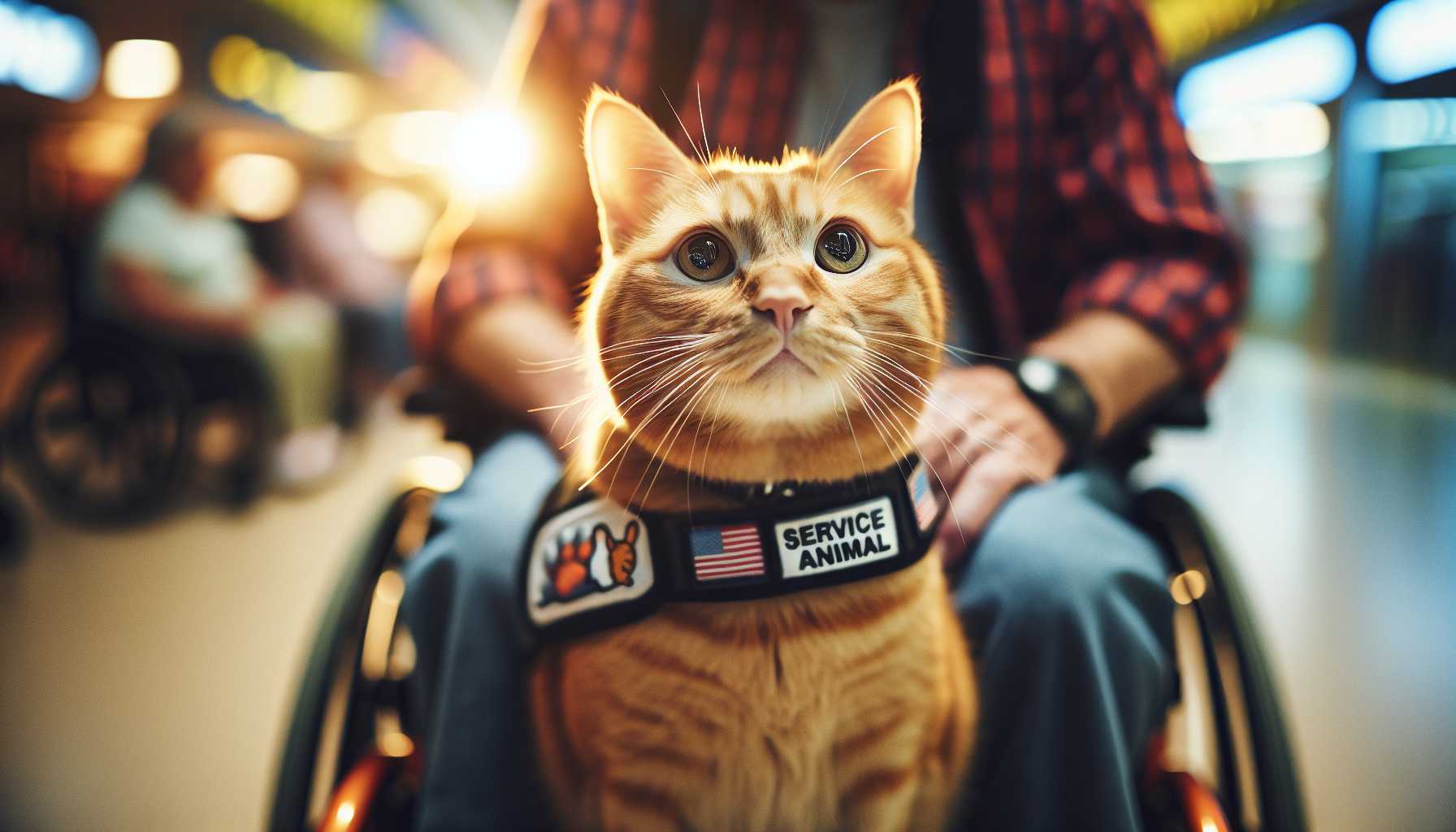Service Cat Training: Complete Certification Guide 2024

Comprehensive Guide to Service Cat Training and Certification in 2024
Interested in training your cat to become a service animal? Then you've arrived at the right place! Here's a congenial guide that explains all you need to know about service cat training and certification in 2024.
Understanding the Role of a Service Cat
Service cats are unique felines that have been trained to aid individuals with disabilities. Their responsibilities stretch beyond that of emotional support animals, as they carry out specific tasks to assist their users. These tasks can help with an array of issues, such as anxiety, PTSD, and even seizure detection!
Recognizing the Legal Significance of Service Cats
Although service dogs tend to be more prevalent, cats too can be recognized as service animals. However, it's noteworthy that under the ADA, service cats do not enjoy the same legal protection as their canine counterparts. Nonetheless, a growing number of establishments are becoming welcoming to well-trained service cats.
Essential Training Goals for Service Cats
It's crucial for your cat to acquire these vital skills:
- Mastery of basic obedience commands
- Training in public behavior
- Training specific to assigned tasks
- Coping with stress
- Social integration
Prioritizing Early Training
The best time to begin training is when they're kittens, ideally between 8-12 weeks old. Here's how you can kick off:
- Evaluate your cat's personality
- Define clear training objectives
- Make use of positive reinforcement
- Practice consistently
- Keep records of progress
Customizing Training According to Tasks
Every service cat requires specialized training tailored to their owner's needs. Common assignments include:
- Interrupting anxiety spells
- Medication reminders
- Seizure alert delivery
- Therapeutic pressure application
- Blood sugar levels detection
Process of Certification
Despite the absence of a national certification institution, several reputable organizations offer promising training programs. When selecting a certification program consider:
- Qualified instructors
- Practical, hands-on training sessions
- Written evaluations
- Public access tests
- Regular recertification
Investment of Time and Money
Usually, it takes: - 6-12 months of focused training - A financial investment of $2,000 to $5,000 in training expenses - Frequent practice times - Sustained maintenance training
Secrets of a Successful Training Program
Follow these tips to make your service cat training successful:
- Remain patient and consistent
- Use enticing treats
- Keep training periods short
- Rotate the training environments
- Establish an assisting network
Selecting a Suitable Trainer
Find trainers who: - Boast of previous experience in handling service animals - Comprehend cat behavior extensively - Employ positive reinforcement techniques - Can produce solid references - Will offer continuous support
Mastering Public Access Training
To ready your cat to handle real-world situations, the focus should be on helping your cat: - Stay composed under various circumstances - Resist distractions - Consistently follow instructions - Behave professionally - Handle unforeseen incidents
Certifications Renewal Protocols
Ensure your certification is up to date by: - Enrolling in refresher courses - Maintaining a record of continuous training - Regular vet appointments - Updating the task training - Following certification regulations
Common Hurdles and Their Resolutions
If you encounter common obstacles like: - Variable performance - Distractions in the environment - Training standstills - Public misunderstandings
Don't fret! Not all cats learn equally, but persistence is key!
Wrapping Up
Though the journey of training a service cat necessitates unwavering commitment, the rewards are profoundly gratifying. You are well on your way to making a difference, armed with perseverance and appropriate assistance.